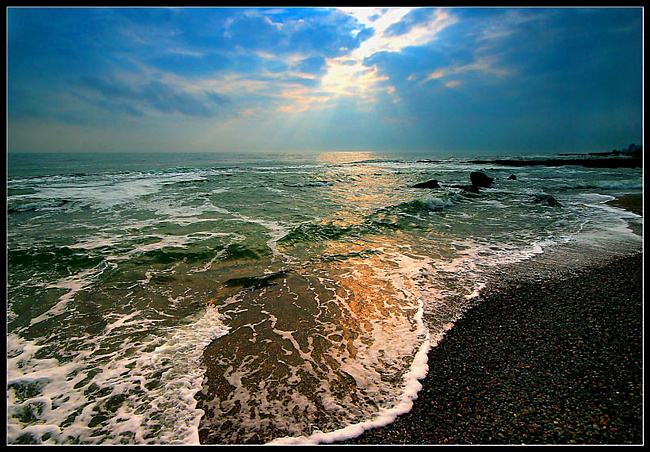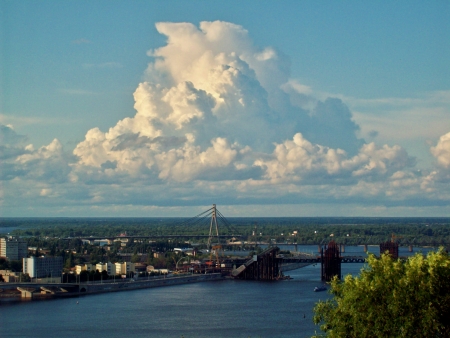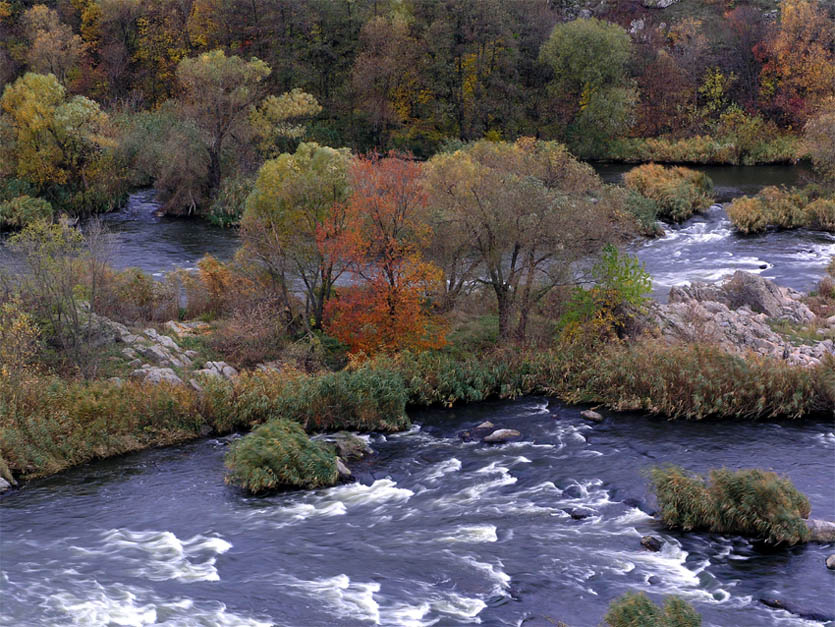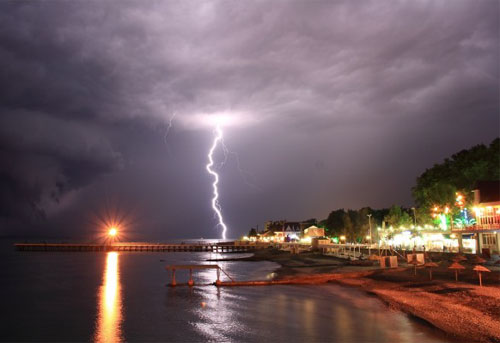|
Knowledge Hypermarket>>Geography>>Geography of 8th grade >> Geography: main river basins and their characteristics. Character of water mode of rivers (fall, slope; water mode, supply, water expenses in river, annual river run-off). Work of rivers, channel formation, including concepts of basis erosion, solid river run-off. The largest river systems of Ukraine.
Thus it is impossible to imagine Ukraine without the Dnieper-Slavutych. For us it is not only the powerful waterway, picturesque beauty, but also the reflection of the soul of our nation, its history. On the banks of the Dnieper the kernel of the Ukrainian state – golden-domed Kyyiv was formed, the first Ukrainian democracy - the Zaporizhzhya Cossacks was born, from its steep slopes the national genius Taras Shevchenko admires the native spaces.
The Dnieper flows along the middle part of Ukraine from the north to the south. It collects waters almost from half of the country’s area, from its northern, western and eastern territories. The river begins with a small bog on the Valdai Hills, in Russia, at height of 220 m above sea level. Further it flows over the territory of Belarus and enters into Ukraine as the big flat river with a wide valley. It has a twisting channel with shallows, sleeves and islets. Depth of the Dnieper amounts to 3-12 m, width is 700-1 500 m. In its flood-lands there are many former river-bed lakes, boggy sites. The right bank of the river is high and mountainous, whereas the left one is low and flat. In areas where the Dnieper crosses the Ukrainian crystal board (between Dnipropetrovsk and Zaporizhzhya) once there were rapids that completely partitioned off the river. Now all of them are flooded by the waters of the Dniprovskyy reservoir. A number of reservoirs formed on the Dnieper did not only flood the rapids but also considerably changed the banks of the river and straightened its channel. On the Dnieper there are many islands (the Hortytsya within Zaporizhzhya, the Trukhanov within Kyyiv). With several creeks the Dnieper flows into the Dniprovsky estuary, and from it with one wide mouth - into the Black sea.
The Dnieper has over 1 150 of small, middle-size and large feeders. The largest of them are the Prypyat (right feeder) and the Desna (left feeder). They bring almost half of the annual river streamflow. Among the feeders of the Prypyat the longest are the Styr and the Goryn with the Sluchcha, and among the feeders of the Desna - the Seym. The large right feeders are the Teteriv, the Ros, the Ingulets, the left feeders are the Sula, the Psyol, the Vorskla, the Oril, the Samara. Supply of the main river and its feeders is mixed. In spring snow thawing predetermines flooding, in summer and in winter mean water is observed, in autumn sometimes high waters occur. Freezing-over of the river lasts from December until March. The Dnieper has the largest annual river run-off (53,5 km3), therefore it is the important source of water supply for population and various areas of economy. The Dnieper waters “feed” hundreds of cities and villages located on the river banks. The river channels are directed for industrial needs of the Donbass and the Krivbass regions, irrigation of dry steppes of the Black Sea Coast and of the Crimea. The Dnieper is the important thoroughfare. The river is navigable along its whole length. The Dnieper is the important source of power supply. Its waters turn turbines of several hydroelectric power stations which develop the cheapest electric power. Nevertheless, due to formation of reservoirs large areas of fertile land were flooded, many settlements were transferred to new places, many cultural and historical artifacts were destroyed. Every year the pollution of the Dnieper waters increases. The pollution with radionuclides that penetrated into bottom sediments due to failure on the Chernobyl atomic power station in 1986 is especially dangerous. Therefore the Dnieper requires appropriate protection.
The Southern Bug is the second largest river in Ukraine according to its length (806 km) and the river basin area. It is the only largest river which completely collects its waters from the territory of Ukraine. Its largest feeders are the Synyukha and the Ingul. The river basin mostly lays within the Ukrainian board, therefore the river and its feeders are cataracted. The Dniester has length of 1 362 km with 705 km within Ukraine. Its source is on the slopes of the Carpathian mountains. In the upper courses it is the typical mountainous river, in the middle stream it turns into flat river with wide valley. Between the Podolska and the Prekarpatskaya heights the valley of Dniester is narrowed and obtains canyon-like forms. Its channel is extremely twisting. The Dniester runs into wide Dnistrovskyy estuary connected with its narrow mouth to the Black sea.
The largest feeders of the Dniester are the Stryy, the Limnytsya, the Seret, the Zbruch, the Smotrych, the Murafa. The Dniester and its feeders have a mixed type of water supply. Flooding comes in spring whereas high waters occur in summer and in autumn. The waters of the Dniester are used for water supply of built-up areas and enterprises, irrigation of fields. On the river the Hydroelectric power station is built. In middle and bottom streams the Dniester is navigable, nevertheless, nowadays the river is almost not used as the transport channel. On the banks of the Dniester such well-known historical and cultural centers as Galych, Khotyn, Bilgorod-Dnistrovskyy are located.
The middle-size rivers of the Sea of Azov basin according to their length are the Kalmius, the Berda, the Molochna, the Salgyr. They proceed in droughty areas and consequently are shallow, whereas the Salgyr in its bottom stream is dried up.
<span style="display: none;" id="1291987610802E" />
Contents of the lesson Если у вас есть исправления или предложения к данному уроку, напишите нам. Если вы хотите увидеть другие корректировки и пожелания к урокам, смотрите здесь - Образовательный форум. |
Авторські права | Privacy Policy |FAQ | Партнери | Контакти | Кейс-уроки
© Автор системы образования 7W и Гипермаркета Знаний - Владимир Спиваковский
При использовании материалов ресурса
ссылка на edufuture.biz обязательна (для интернет ресурсов -
гиперссылка).
edufuture.biz 2008-© Все права защищены.
Сайт edufuture.biz является порталом, в котором не предусмотрены темы политики, наркомании, алкоголизма, курения и других "взрослых" тем.
Ждем Ваши замечания и предложения на email: 
По вопросам рекламы и спонсорства пишите на email: 

















